
THE PICKRICK PROTEST
An Interactive Geo AR Experience
TEAM
Phase1: Yuchen Zhao, Hannah Tam, Rich Down, Rohit Puntambekar
Phase2: Yuchen Zhao, Amanda Y Wang, Daniel P Keehn, Jason Jiang, Angela Dai, Joy Dang, Brandy J Pettijohn
MY JOB
Phase 1: Unity Programming, Prototyping, Design
Phase 2: Project Manager, Design
TOOLS
Unity 3D, Blender, Figma, Adobe Fuse
DELIVERABLES
Project + Paper
IOS + Android versions
INSTRUCTOR
Prof. Janet Murray
PURPOSE
Project for Culture Heritage
DURATION
May.- Aug. 2020(Phase1)
Jan.- Aug. 2021(Phase2)
CATEGORY
AR/VR
AFFILIATIONS
Georgia Tech
• IDEA
The Pickrick Protest is a project commemorating the 1964-1965 Pickrick incidents in which a few African Americans fought for equal rights. “Pickrick” refers to the name of the restaurant owned by Lester Maddox, a former governor of Georgia and staunch segregationist, who notoriously refused to provide service to black people despite the passing of the 1964 Civil Rights Act. Located on Hemphill Avenue, the building was later bought by Georgia Tech (GT) for student services. During the Pickrick incidents, several confrontations occurred between the restaurant owner, patrons, and several non-violent black protestors. As the activists peacefully attempted to enter the locale, they were faced with the violent threats and actions of white segregationists wielding axe handles, guns and baseball bats. The Pickrick building no longer stands, having been replaced by GT’s new student center. To do these important historical stories justice, our team has rejected the traditional use of engraved commemorative plates for a vivid and exciting new form of media to highlight the events of the past. In considering several immersive media experiences, we deemed AR most appropriate for our needs due to its geolocation features and its interactive reality enhancement capabilities.
• KEY FEATURES







• DESIGN OUTCOME
• DESIGN CONSIDERATIONS





• DESIGN PROCESS
1. 3D Modeling and Animation
In order to accurately recreate the Pickrick events using an AR format, research was conducted to collect various documents, archived videos, images, newspaper clippings and other media. Based on this research, we then created 3D models of the individuals and setting involved during the Pickrick incident by using Blender 2.82.
In addition to the above, our modeling efforts included highlighting African Americans by employing some specific design techniques, such as attaching name tags, adding stronger contrast to African American characters and decoloring the white mobs using shades of black and white.

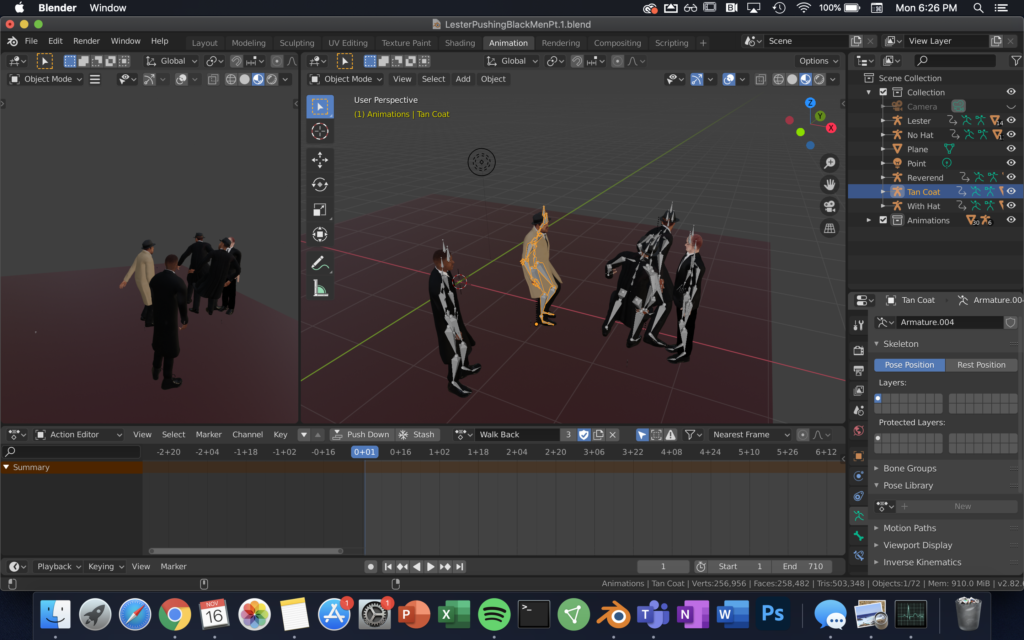
2. Interface Design
Using the “Timeline” tool to continuously and holistically display the Pickrick incidents and the relevant historical events, we arranged the content chronologically from the restaurant opening (1947) to its closing (1965). The timeline primarily uses a scrolling rectangle and buttons to function. This design also aims to integrate various kinds of materials and media from that period, so our App is not only designed as an AR experience, but also includes images, audio files, historical videos, etc.
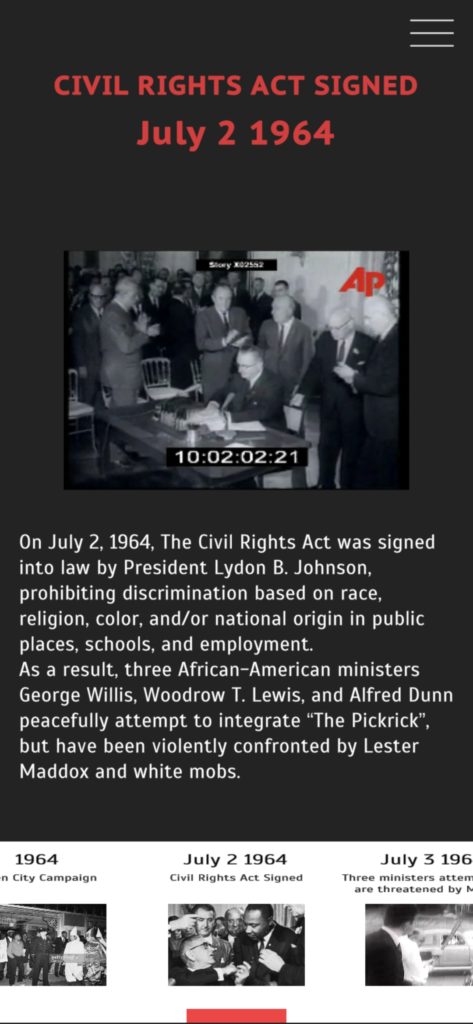
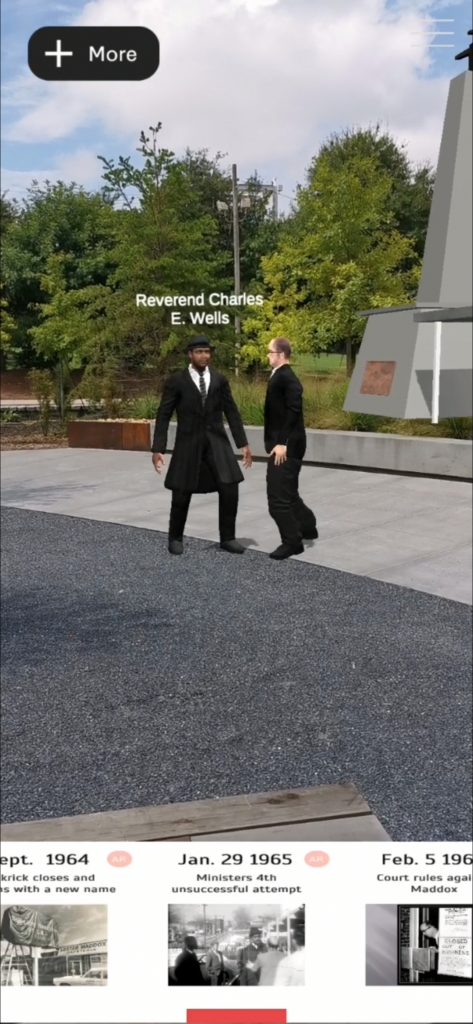
3. AR + GPS Features
After considering several immersive media experiences, we deemed AR to be the best fit for our purposes due to its geolocation features and its interactive reality enhancement capabilities. Using both of these characteristics, visitors of the site will be able to “time travel” to the specific dates of the Pickrick incidents and witness what happened with their own eyes.
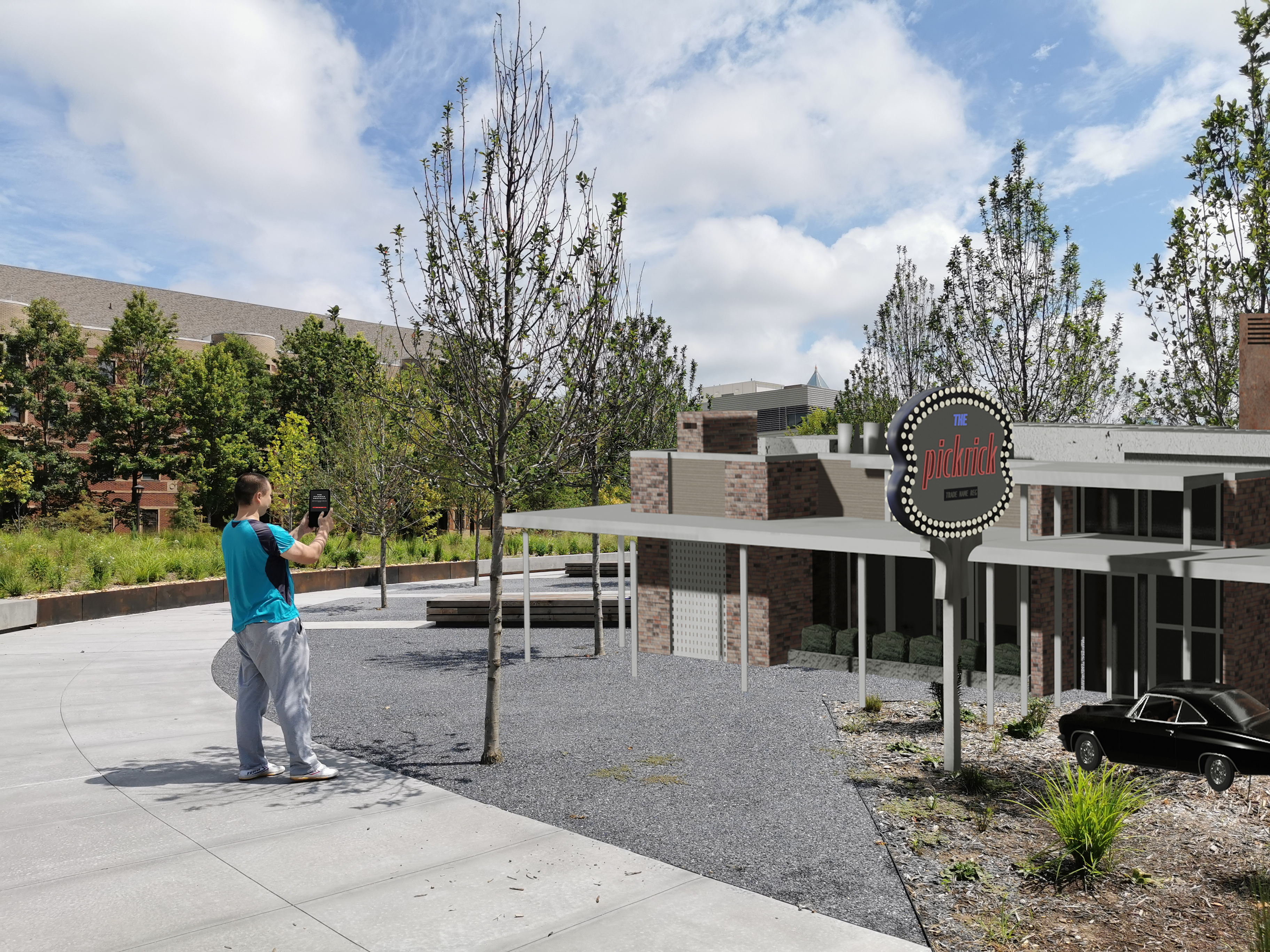
3. AR + Physical Site
In the design process, our goal is to seamlessly blend augmented reality (AR) content with the physical environment. We aim to achieve this integration by incorporating AR elements into various elements of the environment, such as walls, pillars, and benches, all with the aim of elevating the overall immersive experience. A noteworthy example of this synergy is when individuals interact with the benches; sitting down will transport them into the midst of a crucial moment, making them feel as if they are right there in the car with the protestors bravely confronting Maddax’s violent threats.
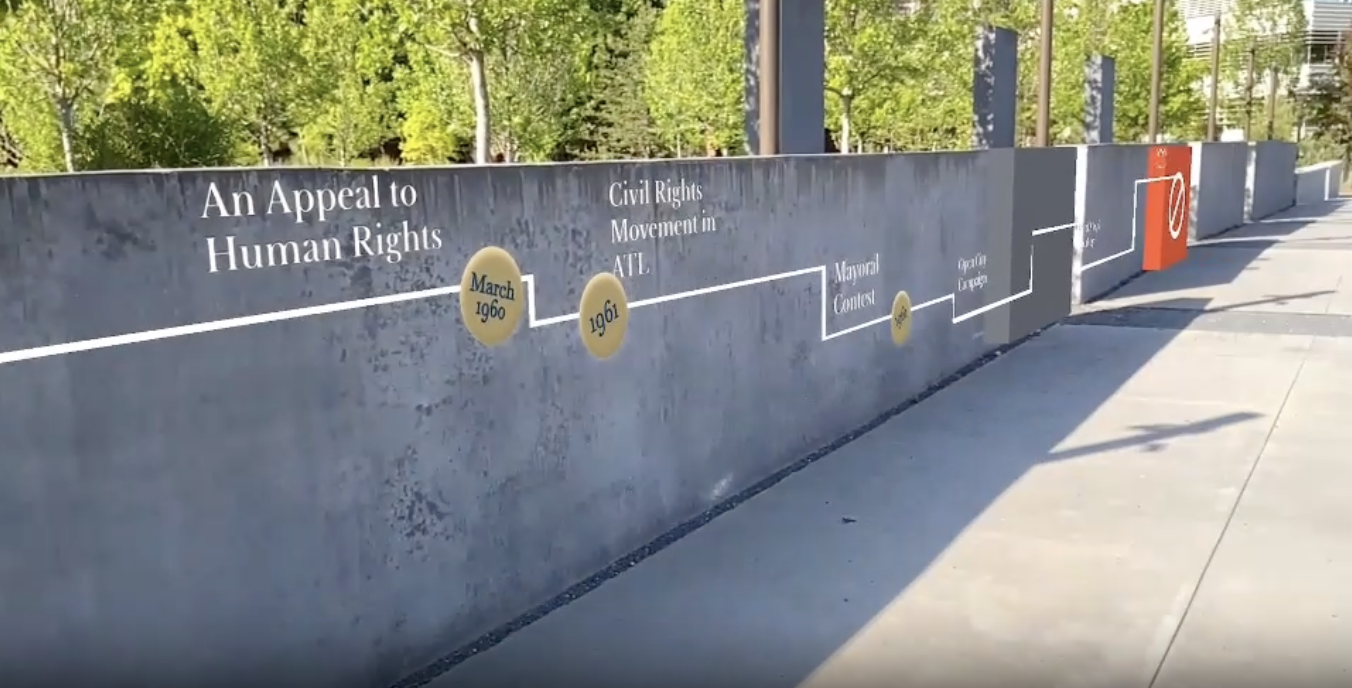
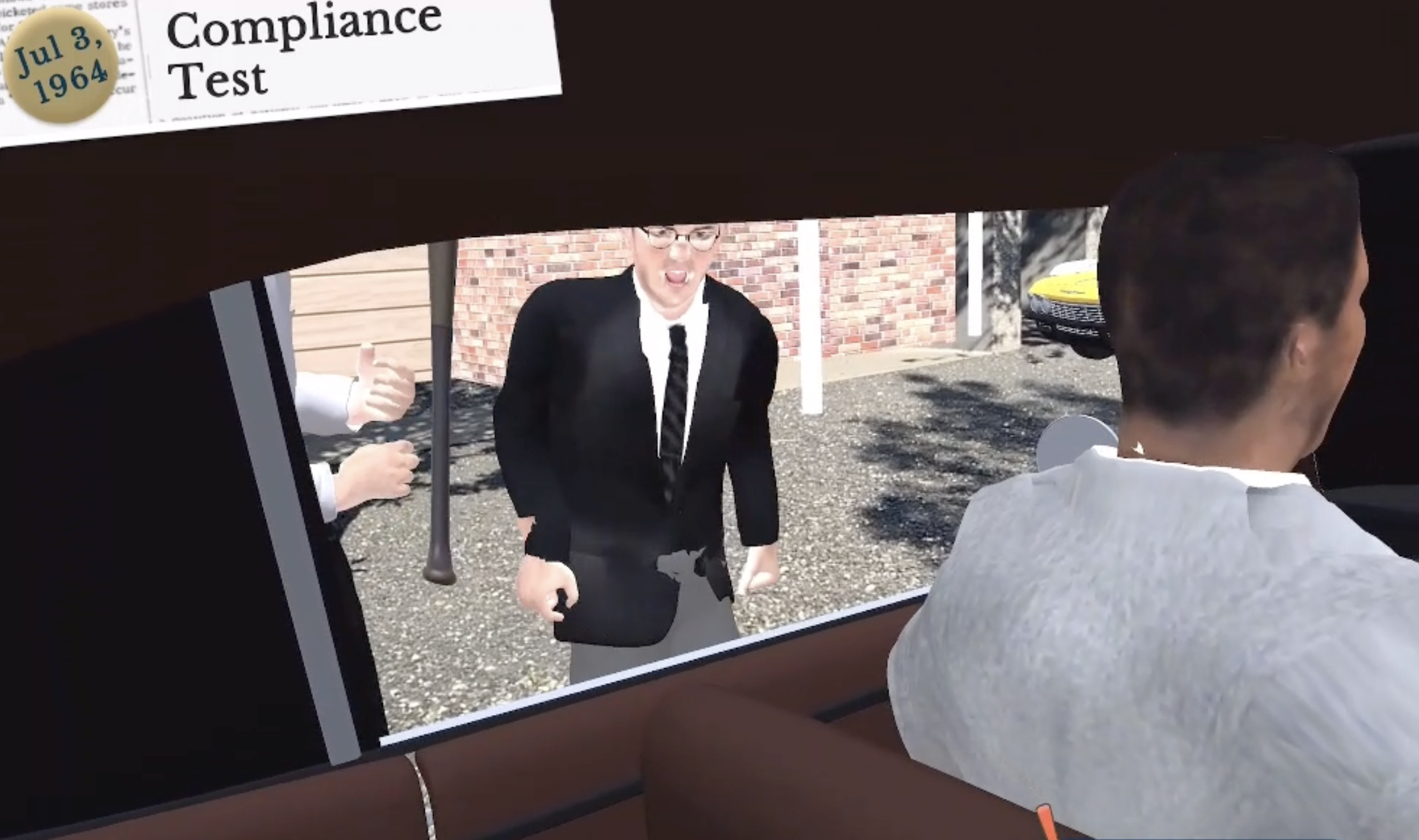
4. Research Paper
Our paper focuses on introducing the narrative design for this location-based AR application. We discuss our approach to creating a meaningful narrative within the technical affordances and environmental constraints of the AR medium and the specific location. The design challenges posed by this project were how to merge the virtual content with the existing, very changed physical space; how to re-center the story on the activists rather than on the segregationist restaurant owner; and how to direct attention in Augmented Reality in order to allow interactors to follow a multi-episode narrative, and to focus on the non-violent activists rather than the aggressive segregationists.
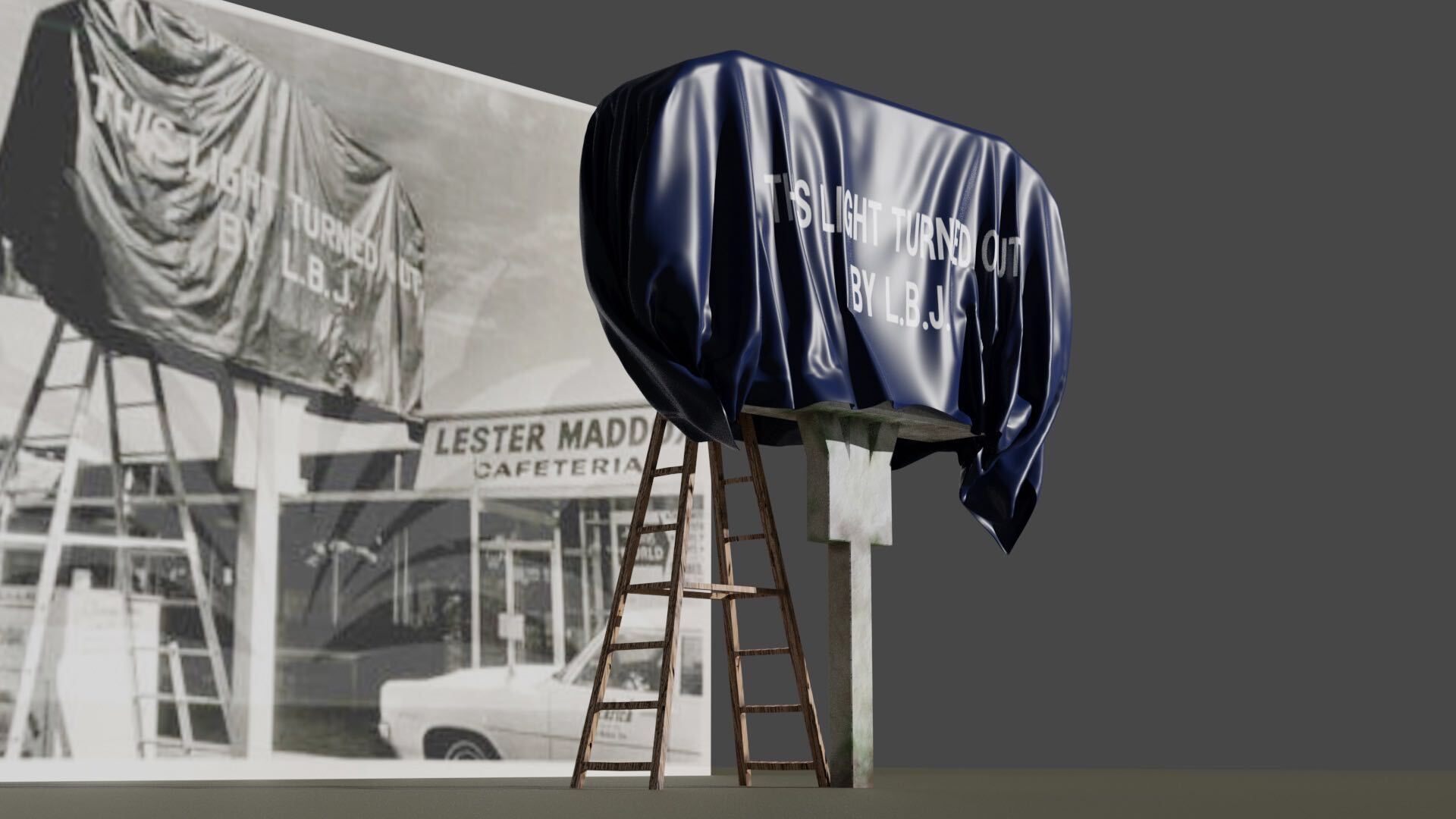

GT DiLAC lab, GT library, Dr. Karcheik Sims-Alvarado, Dr. Todd Michney,
